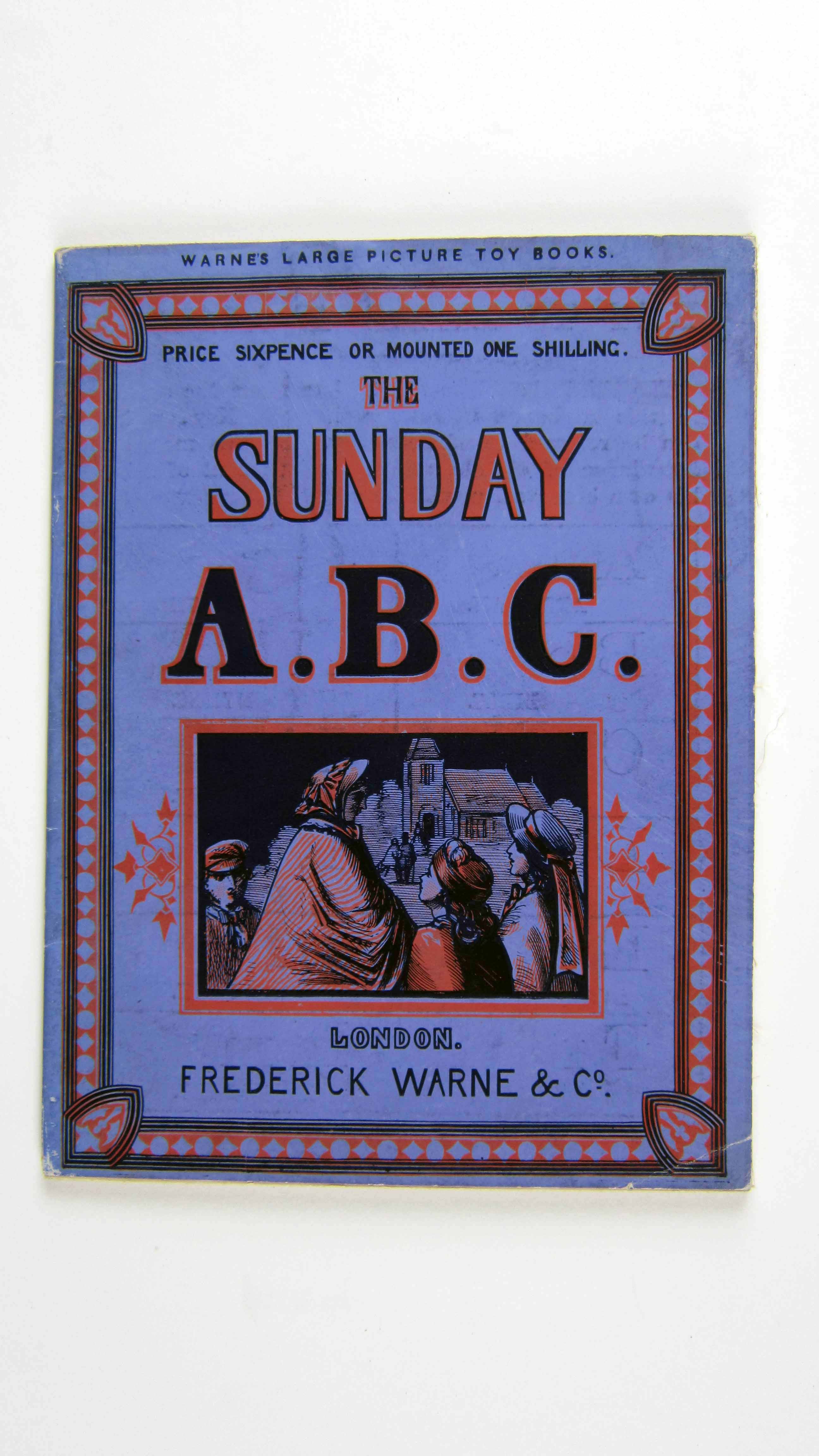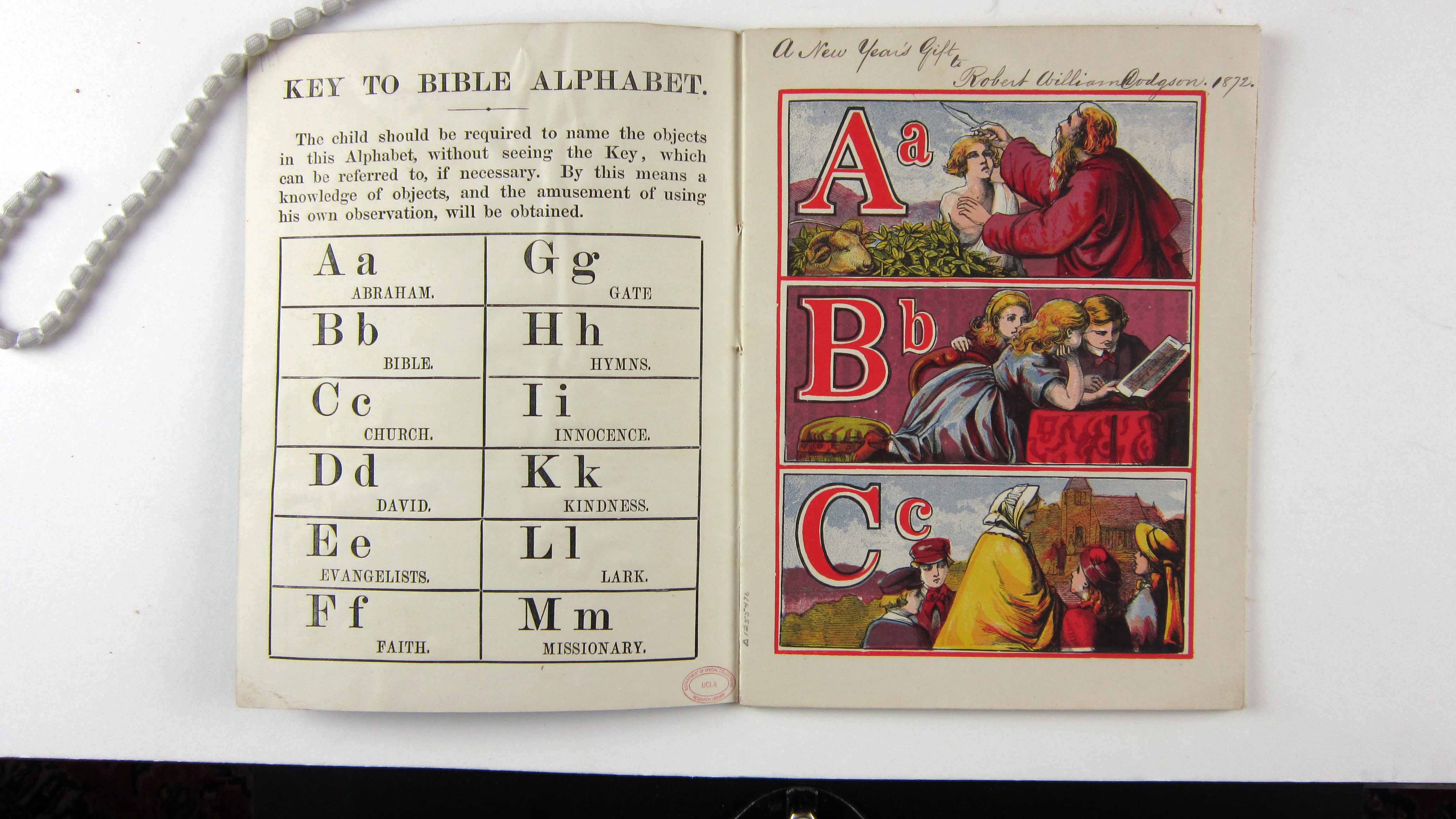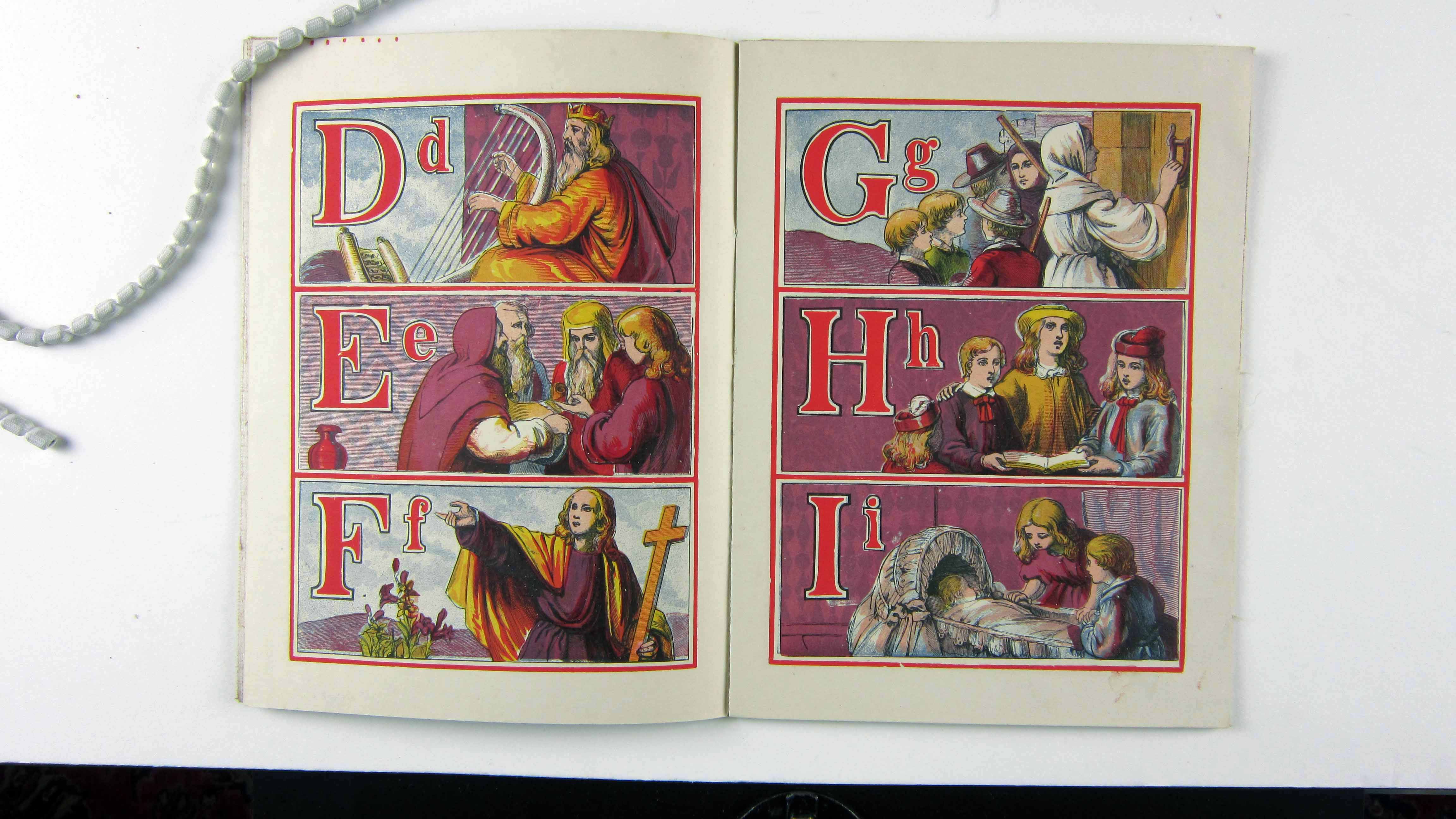

Alphabet books offer a vivid insight into the history of literacy and culture, as well as concepts of childhood. The Children's Book Collection at UCLA contains a rich array of these materials, some well-worn and much-used, some still bright and fresh. Each is a gem of print production and graphical imagery from another time and place. Though the history of alphabet books continues to the present, this exhibit focuses on the works in our collections published between 1700 and 1900, including horn books, primers, works of didacticism and seriousness, whimsy and play.
2. A Jumble ABC
3. A Little Pretty Pocket-Book
4. A New Lottery Book of Birds And Beasts
5. A Pretty Play-Thing for Children of All Denominations
8. ABC of Objects for Home And School
10. ABC with Pictures & Verses
12. Alphabet Et Instruction Pour Les Enfans
16. Dolly's ABC Book
17. Flora's ABC
18. Home ABC
22. Hornbook C. 1700
23. Large Letters for the Little Ones
24. Little ABC Book
25. Little People: An Alphabet
26. Martin's Nursery Battledoor
27. Mother Goose ABC
28. My Darling's ABC
29. Orbis Sensualium Pictus Quadrilinguis
30. People of All Nations: A Useful Toy for Girl Or Boy
31. Picture Alphabet
32. Pretty ABC
33. Railway ABC
34. Rusher's Reading Made Most Easy
38. The Alphabet of Old Friends
40. The Amusing Alphabet for Young Children Beginning To Read
42. The Child's Christian Education
45. The Easter Gift
47. The Favorite Alphabet for the Nursery
49. The Franklin Alphabet And Primer
51. The Golden ABC
55. The Moral And Entertaining Alphabet
57. The Old Testament Alphabet
59. The Picture Alphabet for Little Children
62. The Sunday ABC
63. The Union ABC
64. The Young Child's ABC, Or, First Book
65. Tom Thumb's Alphabet: Picture Baby-Books
67. Warne's Alphabet And Word Book: with Coloured Pictures
68. Wood's Royal Nursery Alphabet
Title The Sunday ABC



Brief description [2] leaves, [8] leaves of plates : col. ill.
Full description This large, brightly colored bible alphabet book could be used at a young reading level. Its size and colors would aid in handling and also in holding the attention of a younger child, and the linen-mounted pages are sturdier than thin paper, like that employed in chapbooks. The cover is also of a thicker make than the interior pages (similar to a light cardstock). The book explores a combination of Biblical stories and modern Christian ideals, such as faith and innocence.
Literacy This Sunday A.B.C. is intended for someone beginning to just learn their alphabet. The letters are the focus of the book alongside the illustrations, because no words or phrases or poems are included on the pages. There are no words for readers to spell or sound out: "A is for Abraham," but this is only written out on the key on the interior cover, not meant to be referenced unless necessary. Upper and lower case letters are printed in large, bold type, standing out easily from the illustrations and large enough for a child to trace with a finger. The use of the religious theme may reflect the early Protestant belief in the importance of literacy as a path to a personal relationship with God and the ability to personally read the Bible.
Childhood A key to each scene is included on the interior front cover, with an explanation for why the captions are excluded: "The child should be required to name the objects in this Alphabet, without seeing the Key, which can be referred to, if necessary. By this means a knowledge of objects, and the amusement of using his own observation, will be obtained." Clearly the child who owned this book would be expected to know very well his or her biblical stories and traditions, or to use the book to improve his or her study on such matters. Children are portrayed in many of the present-day images, dressed tidily and on their way to church or playing politely among themselves. There is a heavy emphasis on the unity of family.
Iconography The dominant cultural iconography in this alphabet book centers around religion. Biblical stories, such as that of Abraham and David, are combined with a championing of expected Christian behavior, such as innocence, faith, and kindness, and other Christian cultural nouns, such as the Bible, church, and hymns. This is evident from the list of vocabulary words chosen (on the interior front and back covers), and in a more subtle way in how the illustrations portray the people in each piece of art. They all appear to be clean, well-dressed, happy, upper-middle class people, with the subtle indication that if the readers also attend church and are properly evangelistic, they perhaps can be the same. The amount of biblical knowledge the recipient would be expected to know or cultivate is impressive and makes the most significant impression from a first examination of the book.
Production The Sunday A.B.C. was published by Frederick Warne & Co., a British publishing firm that was made most famous by its illustrated children's books. They featured such well-known authors and artists as Beatrix Potter and Kate Greenaway. The Sunday A.B.C. is one of the small number of books in the collection printed on linen rather than paper. Linen pages make the book sturdier in comparison to paper, though the production was also more expensive. At its original printing, the linen version of the book would have been approximately twice as expensive as the paper edition. The interior sides of the front cover and back cover are printed with plain black text, most likely letterpress, but the interior pages are printed with beautiful, full-color illustrations in chromolithography. The chromolithography process involves a separate image on stone for each color involved in the print. This produced much more detailed and richly and precisely colored images than previous print technologies, such as stencil-colored relief prints. While the book is much larger than a chapbook or other "pocket-sized" text, it is still a stitched, single-signature production, relatively easy to assemble once printed. The pages are only printed on one side, which from the linen examples in this collection appears to be typical of the production. In this book, the letters of the alphabet are part of the illustrations, rather than a separate process.
Publisher Frederick Warne & Co.
Publication place 23 Cornhill, London
Date 1872
UCLA Call Number CBC * PZ7 .S957 1872
Repository UCLA Charles E. Young Research Library, Dept. of Special Collections
Dimensions 25 cm
Technologies of production Printing
Caption